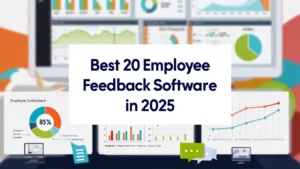The UK’s event management sector has become a cornerstone of its wider services economy. In 2023, the UK events industry was valued at over £70 billion in direct spend, contributing significantly to GDP and employment. Business events alone accounted for around 50% of this value, while festivals, exhibitions, and cultural gatherings brought additional scale and diversity to the market. Demand is being shaped by a mix of corporate recovery spending, consumer appetite for live experiences, and hybrid event formats, which together are driving both resilience and expansion.
From a market perspective, the UK’s event industry supports more than 700,000 jobs, positioning it as one of the most employment-intensive creative sectors. At the same time, consumer surveys in 2024 show that 76% of UK attendees now prefer in-person gatherings over digital-only formats, underscoring the continuing strength of live engagement.
What to expect ahead:
- A breakdown of event market methodologies and data credibility.
- An analysis of economic contributions, market segmentation, and post-pandemic recovery trends.
- Insights on employment, consumer preferences, sustainability initiatives, and future projections.
Understanding Event Management Market Growth in the UK

How this blog uses event statistics
Market sizing for events is often fragmented due to overlapping categories (business meetings, cultural events, music festivals, exhibitions, weddings). This blog applies a structured methodology that consolidates multiple sources such as:
- The UK Events Industry Board and Business Visits & Events Partnership (BVEP).
- Government datasets, including ONS tourism and hospitality accounts.
- Global consultancy reports (PwC, EY, Deloitte) focused on UK events.
- Academic journals and trade associations such as MIA (Meetings Industry Association).
Recency rules for data
Only statistics published in the last 24 months are included unless official sources have not yet updated. When conflicts appear across datasets, priority is given to government statistics first, followed by major industry associations, and then consultancy estimates.
Why this approach matters
The goal is not just to highlight growth trends but to clarify the reliability of numbers that are often quoted without context. Readers will find each figure referenced to its latest available year, making this blog a citation-ready resource for both academic and professional use.
Economic Contribution of the UK Event Management Market

Overall Market Value
The UK events industry generated £61.6 billion in 2023, reflecting a strong recovery and resilience after the pandemic. Corporate events, including conferences, exhibitions, trade shows, and product launches, contributed £33.6 billion of this total.
GDP and Wider Economic Impact
Business events alone added £10.9 billion to the UK economy in 2023, with direct and indirect support for around 114,000 jobs. When considering the full supply chain, the wider events industry supports over 700,000 jobs nationwide. This makes it one of the largest employment contributors within the UK’s creative and visitor economy.
Market Resilience and Recovery Trends
By late 2023, the events market had almost returned to pre-pandemic levels, with business events leading the recovery. Early 2024 data shows the UK outperforming some Western European countries in business event activity, particularly in international requests for proposals.
Employment and Job Growth
In 2023, the sector created approximately 23,000 new roles across event planning, venue operations, logistics, and supply networks. With total employment exceeding 700,000, the industry represents one of the most job-intensive areas of the UK’s services economy.
Market Segmentation of UK Events

Business and Corporate Events
Business events are the backbone of the UK event management market, contributing £33.6 billion in 2023. This segment includes conferences, exhibitions, trade shows, and product launches. London remains the dominant hub, but regional centres such as Manchester, Birmingham, and Edinburgh are attracting more international conferences due to infrastructure investment and venue expansion. Corporate events also account for nearly half of the UK event industry’s economic output, underlining their importance to long-term market growth.
Cultural, Festivals, and Music Events
Cultural and music festivals represent one of the most visible segments. The UK is home to globally renowned events such as Glastonbury, which generated over £100 million for the Somerset economy in 2023. More broadly, the live music sector contributed £6.6 billion to the UK economy in 2023, employing over 200,000 people. This sector is strongly tied to both domestic tourism and international visitor spend, making it an important driver of regional economies.
Sports Events
Sports are a critical pillar of the UK event management market. Major events such as the Wimbledon Championships, the Premier League, and international rugby matches provide significant broadcast revenues and tourism impacts. In 2023, the sports events sector was valued at £2.3 billion, with London and Manchester being leading destinations. The UK also benefits from recurring mega-events, including upcoming commitments like the UEFA Champions League final in 2024 and the Commonwealth Games legacy.
Weddings and Social Events
Weddings and private events form another key part of the market, particularly given the UK’s strong domestic demand. The UK wedding industry was valued at approximately £14.7 billion in 2023, with spending concentrated on venues, catering, and entertainment. Social events contribute steady year-round revenue, cushioning the industry against seasonal volatility from festivals and large-scale exhibitions.
Exhibitions and Trade Shows
Exhibitions and trade shows remain a high-value sub-sector, closely tied to business tourism. The UK hosted over 1,000 major exhibitions in 2023, drawing millions of visitors and generating billions in trade deals. London’s ExCeL Centre and Birmingham’s NEC remain flagship venues, with continued international growth projected through 2025.
Post-Pandemic Shifts in UK Event Management

Hybrid and Digital Event Models
One of the most significant outcomes of the pandemic has been the rise of hybrid events. While 2020 and 2021 forced a move to online platforms, the long-term impact has been a blended approach. By 2023, around 60% of corporate events in the UK included some form of digital participation, whether through livestreaming, virtual breakout rooms, or recorded content. This has allowed organisers to reach wider audiences, especially for conferences and trade shows that benefit from international participation without the costs of travel.
Shifts in Consumer Preferences
The appetite for live gatherings has rebounded strongly. Surveys in 2023 showed that three-quarters of UK attendees prefer in-person events over digital-only formats. This aligns with rising ticket sales for festivals, live music, and sports. At the same time, digital extensions remain popular, particularly among younger demographics who value on-demand access and hybrid experiences. This dual demand is reshaping how event planners allocate budgets, with more investment going into both physical production and digital infrastructure.
Venue and Supplier Adaptations
Venues across the UK have adapted by upgrading their technological capabilities. Many major conference centres now advertise built-in streaming technology, hybrid event studios, and advanced networking platforms as part of their standard offerings. Suppliers have followed suit, with audiovisual and tech partners reporting year-on-year growth of more than 20% in hybrid event services since 2022.
Long-Term Market Outlook
The hybrid model is expected to remain a permanent fixture of the UK event management market. Analysts predict that by 2025, the hybrid segment will represent more than one-third of corporate event formats, ensuring that the UK remains competitive in attracting both domestic and international audiences. This shift is not replacing traditional formats but expanding the market by creating new layers of engagement.
Employment Trends and Skills Demand in the UK Event Management Market
Hiring momentum and where the jobs are
The UK event management market continued adding headcount through 2023 and into early 2024. Industry surveys reported nearly half of organisations expanding their workforce at the start of 2024, while a further four in ten held staffing steady compared with the prior year. On the demand side, the exhibitions sub-sector alone supported around 114,000 jobs in 2024, and the broader events ecosystem is estimated to support well over 700,000 roles across venues, agencies, caterers, logistics, tech providers, security, and travel. Inbound business event activity added further pull on labour: the UK welcomed about 1.5 million inbound business event visitors in 2023, with spend of roughly £1.7 billion, which sustained employment in host cities and at major venues.
Across the wider economy, vacancy levels eased during 2024–2025, but arts, entertainment, and recreation still reported thousands of open roles each quarter. This cooling has helped employers re-balance teams after the rapid rehiring phase of 2022–2023, yet many specialist roles remain tight.
Skills that are hardest to find
Hiring managers consistently flag three clusters as the most competitive:
- Technical production and AV: show control, broadcast-grade audio, LED and projection mapping, networked media, and show-calling. Demand rose alongside hybrid and large-format production since 2022.
- Digital event delivery: streaming architecture, platform operations, remote speaker management, and post-event content workflows. By 2023, around six in ten UK corporate events included a digital component, and teams have kept those capabilities in-house.
- Commercial and data roles: sponsorship sales, yield management, pricing, visitation analytics, and CRM marketing for year-round series. Organisers running portfolios of exhibitions now treat audience data as a core asset, pushing up demand for analysts who can segment buyers and track conversion from registration to attendance.
Alongside these, sustainability has moved from policy statements to delivery roles—supplier auditing, materials recovery plans, energy monitoring at venues, and Scope 3 reporting across freight and stand build. Many organisers now specify emissions measurement at brief stage, creating work for operations staff who can integrate carbon tracking into site schedules.
Pathways, pay signals, and retention
To widen the talent pool, employers have stepped up apprenticeships and “returnerships” since 2023, with larger venues and show-build suppliers notably active. Short courses in show production, rigging, and live sound remain popular with career-switchers from film/TV and hospitality. Agencies report stronger uptake for multi-disciplinary producer tracks that combine budgeting, client service, and technical literacy.
Pay signals have stabilised after the sharp swings of 2022. Typical movement through 2024–2025:
- Entry-level coordination: steadier starting salaries as vacancy pressure cooled, but overtime availability remains a factor during peak seasons.
- Mid-level producers and project managers: modest increases tied to shortage skills (AV-literate producers, floor managers, and content producers who can run broadcast-style plenaries).
- Specialists: continued premiums for networked AV engineers, lighting programmers, graphics ops, Health & Safety (CDM) competency, and sustainability leads able to deliver supplier engagement and reporting.
Retention efforts have shifted toward predictable rostering, cross-training between live and digital roles, and clearer career ladders from coordinator to producer to account lead. Organisers with recurring exhibition portfolios report the best retention where teams can rotate between show cycles rather than living on one-off gigs.
Demand Drivers and Revenue Mix in UK Event Management
Corporate budgets and booking cycles
UK organisations lifted event allocations through late-2023 and early-2024, with most teams reporting mid-single-digit budget growth against the prior year. Decision cycles have normalised:
- Conferences & meetings: typical lead time 4–6 months; peak-season RFPs still land 8–9 months out.
- Exhibitions & trade shows: portfolio planning usually 9–12 months ahead, with renewals brought forward where rebook rates are strong.
- Brand activations & roadshows: shorter windows persist (6–10 weeks) as marketers tie spend to campaign and product-launch calendars.
Booking patterns also show firmer conversion from RFP to contract than in 2022–2023, helped by clearer internal approval processes and steadier venue availability.
Attendee behaviour and on-site spend
Audience appetite has held up. Organisers report:
- Higher dwell times at business shows (full-day attendance returning as conference agendas lengthen again).
- Rebound in paid registrations for content-led conferences, particularly where speaker line-ups are announced earlier.
- Consumer show spend tracking up on 2022 baselines, with visitors favouring pre-booked time slots on Saturdays and add-on experiences (workshops, meet-and-greets).
- No-show rates easing back toward pre-2020 norms for paid events; free-to-attend registrations still require strong reminder and on-the-day prompts.
Inbound business travel and city rotation
International corporate groups returned in greater numbers across 2023, supporting venues in London, Birmingham, Manchester, Glasgow, and Edinburgh. Bid activity for 2025–2026 shows rotation back to multi-city cycles, with tech, healthcare, and professional services driving mid-week conference demand. Regional gains are strongest where:
- Air and rail connectivity supports two-night stays, and
- City convention bureaux package venue clusters with hotel allocations and social-programme options.
What’s pushing demand right now
- Product and partner marketing: portfolio owners seek measurable deal flow; exhibitions remain central to pipeline goals.
- Member organisations: annual congresses that paused in 2020–2021 are back on stable cycles with hybrid catch-up content.
- Content reuse: teams budget for filming and post-event edits to extend reach without adding separate campaign costs.
- Sponsorship certainty: multi-year headline agreements are more common, locking in visibility across a series rather than one-offs.
Revenue mix: typical shares reported by UK organisers
Percentages vary by format; ranges below reflect common patterns in 2023–2024.
| Stream | Typical Share |
| Exhibitor/stand sales (trade shows) | 35–50% |
| Delegate/attendee fees | 15–25% |
| Sponsorship & advertising | 15–25% |
| Venue services recharges* | 5–10% |
| Digital add-ons (virtual passes, VOD) | 3–8% |
| Merch/licensing/ancillary | 1–3% |
*Recharges include production packages, power, rigging, and on-site services structured via the organiser.
Format mix and growth pockets
- Exhibitions and trade shows remain the largest single earner for many portfolios, supported by high rebook rates and tiered stand-pricing.
- Conferences show steady growth where content is accredited (CPD/CME) or tightly curated for senior audiences.
- Consumer shows benefited from pent-up interest in 2023 and stabilised in 2024 with tighter curation and add-on experiences.
- Awards & gala events maintain sponsorship strength due to predictable hospitality demand and brand-safe environments.
- Hybrid layers add incremental revenue rather than replacing physical attendance; monetisation comes from virtual passes, sponsor content hubs, and extended access windows.
Pricing, Margins, and Cost Pressures in the UK Event Management Market
What’s happening to prices right now
Venue and supplier quotes settled compared with 2022 spikes, but they remain above 2019 baselines. Through late-2023 and 2024, organisers commonly reported:
- Venue day-rates trending 5–8% higher year on year, with flagship city-centre sites at the top end and regional venues closer to mid-single digits.
- Catering per-head up 6–10% versus 2022–2023 menus, reflecting food input volatility and higher labour costs in kitchens and front-of-house.
- Crew day-rates and show overtime up 4–6% in line with National Living Wage uplifts and tight availability for technical grades during peak months.
- Power and utilities eased from the 2022 shock but still sit 20–30% above pre-2020 norms; large halls and high-load builds feel this most.
- Freight and last-mile logistics stabilised in 2024, with most portfolios reporting mid-single-digit changes year on year.
Ticket and stand pricing moved accordingly. Typical adjustments in 2023–2024 were 3–8% on paid delegate passes and 5–10% on exhibition stand space, with premium corners and feature zones carrying higher uplifts due to demand.
Cost structure snapshot (organiser view)
Shares vary by format and scale, but the following ranges are typical for mid-to-large UK shows in 2023–2024.
| Cost Line | Typical Share of Budget |
| Venue hire & tenancy (incl. utilities) | 18–28% |
| Production & AV (rigging, staging, LED, sound) | 20–30% |
| Catering & hospitality | 10–18% |
| Staffing & crew (incl. security/medics) | 10–16% |
| Marketing & registration tech | 8–12% |
| Content & speaker costs | 5–10% |
| Logistics, storage, freight | 4–8% |
| Insurance, compliance, contingency | 3–6% |
Gross margins vary by product type:
- Trade exhibitions: often 18–28% before central overheads, higher where rebook is strong and show-feature build is modular.
- Content-led conferences: 12–22%, depending on speaker fees and venue minimums.
- Awards & gala: 15–25%, sensitive to catering deals and headline sponsorship.
- Consumer shows: wider spread (8–22%) based on retail partner participation and on-site spend.
Tactics organisers are using to protect margins
- Early inventory windows: advance loyalty pricing for exhibitors tied to multi-year commitments; helps lock revenue before cost inflation rolls in.
- Tiered stand menus: clear inclusions (power, basic build, cleaning) reduce on-site add-ons that trigger disputes and overtime.
- Modular scenic packages: re-use of branded features across a series; lighter builds reduce rigging, trucking, and strike hours.
- Energy planning: precise power schedules, LED-first designs, and night-set policies to cut generator or venue draw.
- Crew rostering discipline: fewer late-night resets; back-to-back sessions planned to minimise re-rigs.
- Menu engineering: switching to high-yield formats (bowl food, canapés, buffet hybrids) to steady costs without dulling guest experience.
- Sponsor entitlements as media: guaranteed content slots, post-event VOD, and newsletter inclusions priced against audience reach, not just on-site branding.
- Data-clean registration: stronger pre-event verification lowers badge waste and materials spend while improving attendance certainty.
Venue negotiations that actually move the needle
- Shoulder-day deals: partial build days at reduced tenancy where feasible.
- Utility transparency: metered power with published rates and forecast curves for heavy-load stands.
- Service bundles: packaging rigging, housekeeping, and security within the tenancy quote to prevent surprise recharges.
- Space adjacency: clustering content theatres near sponsor hubs to limit duplicate AV sets.
Supplier relationships and rate stability
Organisers that publish rolling 12-month calendars to key suppliers report steadier pricing and faster crew confirmations. Framework agreements with index-linked clauses (not open-ended increases) have become common since 2023, giving both sides a reference when inputs move.
Regional Hubs and Venue Capacity in the UK Event Management Market
London remains the anchor, with faster moves in large-format builds
London holds the widest spread of formats—from boardroom summits to citywide exhibitions. ExCeL London offers ~100,000+ sqm of flexible halls across two phases, while Olympia London’s multi-year redevelopment is adding hotels, theatre capacity, and refreshed halls that extend multi-day options for international organisers. The QEII Centre and etc.venues cover the mid-capacity conference layer, pairing city-centre access with scalable breakout room counts. Booking patterns show the capital capturing the majority of international congress bids among UK cities, especially in tech, healthcare, finance, and professional services. Peak windows concentrate in May–July and September–November, with short-notice corporate meetings filling shoulder weeks.
Midlands and the powerhouse of exhibitions
Birmingham’s NEC continues to be the UK’s largest single-site exhibitions campus, with ~180,000+ sqm of interlinked halls plus on-site hotel stock and rail access. The ICC Birmingham handles conference flows with tiered theatres and a compact walkable footprint. Organisers cite strong rebook rates for recurring trade shows and hobbyist consumer events, supported by reliable drive-time catchment from across England and Wales. Typical dwell patterns show full-day stays for trade formats and half-to-full day for consumer shows with add-on experiences.
North West growth: Manchester’s arena and citywide meetings
Manchester Central provides ~23,000 sqm of hall space with flexible conference theatres, backed by a tight convention quarter of hotels and dining. The opening of Co-op Live added a next-generation large-format arena for entertainment and brand spectacles, lifting the city’s ability to stage high-production ceremonies and content-led showcases. Bid rotation for 2025–2026 points to more international association meetings returning, helped by air links and improved rail timetables.
Scotland’s dual appeal: Glasgow and Edinburgh
Glasgow’s SEC campus (including the SEC Centre, SEC Armadillo, and OVO Hydro) supports ~20,000+ sqm in hall capacity plus arena-scale plenaries, making it a fit for science, engineering, and medical congresses that need both exhibition and headline sessions. Edinburgh’s EICC focuses on congress and corporate meetings with auditoria to ~2,000 and strong breakout inventory. Association organisers value Scotland’s joined-up city support services, including volunteer programmes and civic receptions that add to bid strength.
North East and Yorkshire: stable portfolios with sector depth
Leeds and Newcastle have consolidated steady calendars in healthcare, digital, and public-sector meetings. Leeds benefits from the city’s hospital and academic clusters, while the First Direct Arena and conference hotels extend options for awards and large plenaries. Newcastle’s proximity to life-sciences and energy research pulls specialist congresses with two-night patterns that support local hospitality.
North West and Merseyside: waterfront conferencing and arena shows
Liverpool’s ACC Liverpool campus (BT Convention Centre, Exhibition Centre, and M&S Bank Arena) brings interlinked halls and arena seating on one waterfront site, enabling combined conference, exhibition, and gala formats without complex transfers. Medical and education associations remain core, with spring and autumn the busiest.
Wales and Northern Ireland: targeted growth with sector hooks
Cardiff’s Principality Stadium and ICC Wales (near Newport) offer large plenary options for association congresses and consumer events. ICC Wales’ pillar-free main hall and woodland setting appeal to brand experiences and multi-day medical meetings. Belfast’s ICC Belfast and Waterfront Hall maintain a compact citywide footprint with reliable hotel allocations, favouring tech, public-sector, and creative conferences.
What’s booking fastest right now
- Portfolio exhibitions with high rebook and modular feature sets (fast contracting, predictable margins).
- Accredited conferences (CPD/CME) in healthcare and professional services with 12–18 month cycles.
- Awards and gala formats in arenas and large ballrooms, grouped into autumn series.
- Brand showcases that use arena-scale rigs for product reveals and content capture.
Capacity signals organisers care about
- Column-free spans for sightlines and broadcast rigs.
- Built-in broadcast galleries and venue fibre for hybrid layers.
- Walkable hotel clusters within 10–15 minutes for VIP and speaker blocks.
- Freight efficiency (multiple doors, marshalled yards, night builds to protect show hours).
- Sustainability reporting readiness (power metering, waste segregation, published venue emissions factors).
Sustainability Standards and Reporting in UK Event Management
What sponsors and attendees expect in 2024–2025
Sustainability commitments have moved from “nice to have” to baseline. Bid documents and sponsor packs now routinely ask for:
- A show-level emissions estimate (Scopes 1–3 where feasible).
- Materials and waste plans with diversion targets (often 60–80%).
- Clear energy sourcing (venue grid mix, temporary generation plans, and overnight draw policies).
- Food policies covering surplus redistribution, lower-emission menu options, and packaging.
- Travel guidance that prioritises rail over short-haul flights for domestic itineraries.
Attendee sentiment reflects the same shift. Surveys in late-2023 and 2024 show a majority of UK delegates willing to accept changes such as re-usable badge holders, simpler stand builds, and plant-forward menus if organisers explain the impact and keep the experience high quality.
Standards organisers actually use
UK organisers, venues, and suppliers most commonly reference:
- ISO 20121 for event sustainability management systems.
- Net Zero Carbon Events guidance for target-setting and reporting structure.
- DEFRA greenhouse gas conversion factors for travel, energy, and materials calculations.
- SECR reporting influences for larger companies (where applicable), aligning internal carbon accounting with event-level reporting.
These frameworks help teams publish consistent numbers, avoid double counting across organiser and venue footprints, and set year-on-year baselines.
The emissions picture, simplified
Most UK shows now break down reporting by source so teams can act where it matters.
| Area (typical for UK shows) | Main emissions sources | Common actions in 2024–2025 |
| Energy | Grid electricity, temporary generation | Venue renewable tariffs; LED first; power metering by hall/feature; tighter overnight policies |
| Travel | Delegate, exhibitor, crew transport | Rail-first guidance; grouped shuttle routes; remote build checks to cut site visits |
| Build & materials | Timber, metals, carpets, graphics | Modular sets; re-use libraries; carpet-free aisles; recycled content requirements |
| Catering | Food production and waste | Menu engineering toward lower-emission dishes; surplus donation; measured portions |
| Waste | Mixed streams, contamination | Clear signage; on-stand sorting; back-of-house separation; verified diversion reporting |
Practical steps UK teams are implementing
- Carpet and graphics policies: aisle carpet removal or re-use schemes; fabric graphics sized for re-use across a series; ban on single-use foamex.
- Freight efficiency: consolidated deliveries, timed slots, and lighter sets to reduce trucking.
- Power planning: show-by-show metering, LED walls sized to audience, standby rules for rehearsals.
- Menu choices with data: carbon-labelled dishes, seasonal sourcing, and water refill points to cut single-use bottles.
- On-site measurement: weigh-bridge or vendor tickets for waste; venue-issued emissions factors for electricity and gas.
- Supplier onboarding: pre-qualification questionnaires that ask for energy, fleet, and materials policies, plus evidence of training.
Reporting that earns confidence
Credible reports in the UK event management market now include:
- A method note (what was measured, what was modelled, and any limits).
- Location-based vs market-based electricity figures where relevant.
- A materials ledger for stand builds and feature areas, showing re-use and recycling outcomes.
- A summary of residual emissions and any removal/offset approach (only after reductions are shown).
- Year-on-year comparisons at product level (e.g., “Conference A 2023 vs 2024”) to track genuine improvement.
Where results are showing up
- Energy: double-digit percentage reductions on show floors that switch to strict overnight policies and LED-only specs.
- Materials: significant cuts when organisers move to modular scenic packages and prohibit single-use substrates.
- Travel: measurable savings where delegate rail options are highlighted during registration and venue pages show door-to-door journey times.
- Food: waste down when service styles match audience flow (e.g., bowl food at networking peaks, plated menus only where seating is assured).
Costs and payback
While some measures add line-items (metering kits, specialist crew), many save money: fewer carpeted areas, lighter sets, smaller power supplies, tighter truck movements, and menus designed to limit waste. Procurement teams increasingly ask suppliers to price re-use versus one-off builds during tender so savings are visible at contract stage.
Technology, Data, and Product Strategy for Event Management Market Growth in the UK
Registration stacks that shorten queues and raise conversion
UK organisers have converged on modular stacks: a core registration platform, a badge/onsite toolset, payment, and a middleware layer to pass data into CRM and marketing systems. What’s working now:
- Short forms and staged profiles: collect only must-have fields at first touch; expand profiles later via preference centres or badge scans.
- Wallet passes and QR-first badging: cut print lines and shrink staffing at peak times.
- Clear VAT handling: UK and EU attendee flows need clean VAT logic at checkout, especially for B2B shows.
- Conditional pricing: member status, early blocks, and group bundles are handled in the platform rather than by manual codes.
Lead capture that exhibitors will actually use
Exhibitors judge events on pipeline quality, not just scanning volume. UK teams have improved adoption by:
- Issuing device-agnostic scanners (app + rental hardware) with offline mode for halls with heavy radio interference.
- Mapping qualifying questions to sales stages so exports land neatly in CRMs.
- Offering shared team pools so scans from multiple staff feed one list without duplicates.
- Delivering next-morning reports with deduped contacts, notes, and session attendance tied to company names.
Simple exhibitor scorecard (what most UK portfolios include)
| Area | What exhibitors see |
| Leads by day & staffer | Counts, notes, and hot flags |
| Company match rate | % of scans matched to known accounts |
| Session & feature traffic | Heatmaps by hour and zone |
| Meetings kept | Confirmed meetings vs. scheduled |
| Post-show follow-up | Clicks, replies, and booked demos |
Content reuse and media workflows
More teams now plan media from the first agenda draft rather than as an add-on:
- Session tagging for rights, speaker approvals, and reuse windows avoids last-minute legal hurdles.
- Stage-friendly formats (shorter talks, structured Q&A) make clean edits easier for post-event viewing.
- Clip libraries from keynotes, product demos, and awards fill marketing calendars for months without extra filming days.
- Sponsor entitlements include pre-rolls, branded downloads, and newsletter placement tied to measured reach.
Data governance under UK GDPR
Trust rests on tidy data practices. UK organisers commonly:
- Offer plain-language privacy pages at registration and on all scanning apps.
- Separate legitimate interest for B2B communications from consent for third-party marketing; build email lists accordingly.
- Set clear retention periods (e.g., two or three show cycles), with automated deletion for lapsed contacts.
- Use Data Processing Agreements with platforms and scanning vendors, and publish sub-processor lists.
- Run subject access request playbooks so teams can respond within statutory time limits.
Product packaging that grows revenue without bloat
Organisers focusing on event management market growth in the UK are refining offers rather than piling on features:
- Tiered tickets with honest benefits (seating, session access, on-demand windows).
- Portfolio passes across a series, priced to encourage repeat attendance.
- Sponsor menus tied to audience reach (attendee segments, content views, newsletter opens) rather than just logo counts.
- Meeting programmes (hosted buyer or curated matchmaking) priced as outcomes—kept meetings, not invites sent.
- Small product updates each edition, announced early, so returning audiences feel the event is moving forward without wholesale format changes.
Measurement that fits inside one dashboard
Too many systems bury the numbers that matter. Teams are settling on a single daily view that shows:
- Registrations vs. target, paid vs. comp, and expected attendance.
- Attendee mix by segment, seniority, and country/region.
- Marketing performance: last-click source, cost per registration, and time-to-convert.
- On-site signals: scans per hour, theatre occupancy, meeting completion rates.
- Commercial health: exhibitor rebook %, average stand yield, and sponsorship sold vs. goal.
Tip: Decide which three metrics trigger changes to floor plans, session capacity, or marketing spend, and make those visible to everyone—from sales to operations.
Practical uses of AI that teams are actually shipping
- Agenda drafting and speaker brief packs that pull from prior-year notes and public bios, then edited by producers.
- Session abstracts and email variants generated from a single source of truth to keep tone and facts consistent.
- Attendee question clustering to shape live Q&A and content priorities for next year.
- Anomaly alerts in registration and badge-scan data that flag sudden drops or spikes by segment or channel.
- Ops checklists that convert build schedules into crew task lists and safety prompts.
Tech procurement: How UK organisers avoid regrets
- Run pilot phases on one event before rolling out across a portfolio.
- Demand plain-English SLAs (uptime, support response, data export format).
- Insist on bulk export rights and documented APIs—no lock-in.
- Keep a runbook: step-by-step checklists for peak hours (badge reprint jams, payment outages, lost scanner recovery).
- Train exhibitors and speakers with micro-videos sent two weeks out, reducing onsite support queues.
Forward Look: Event Management Market Growth in the UK (2025–2027)
Growth path and confidence bands
Barring major shocks, the UK event management market points to steady mid-single-digit growth through 2027. The mix of exhibitions, accredited conferences, awards series, and hybrid extensions supports a 4–6% annual range in most scenarios, with upside where international rotation strengthens and venue pipelines in London and key regions come online. Corporate budgets are holding in mid-single-digit uplifts, while paid delegate models stabilise as programmes announce earlier and lean into credible speaker line-ups.
Quick view: Three-year scenarios
| Scenario (2025–2027) | Demand signals | Revenue effects | Notes |
| Base case | Stable corporate budgets; strong rebook on exhibitions; CPD conferences resilient | +4–5% CAGR | Most likely path; assumes inflation stays contained and travel patterns remain predictable |
| Upside | Higher international bids; stronger sponsor multi-year deals; improved rail/air capacity | +6–7% CAGR | Requires tailwinds from inbound business travel and portfolio pricing power |
| Downside | Macroeconomic slowdown; marketing cuts; supply cost spikes | +1–3% CAGR | Focus on cost discipline, modular builds, and reliable rebook to hold margins |
What will shape winners
- Product clarity: clear value for exhibitors and delegates (meeting outcomes, accredited content, or audience reach) beats feature lists.
- Repeatability: modular scenic packages and templated show features shorten build times and steady margins.
- Data discipline: clean registration, smart pricing windows, and one dashboard for daily health (registrations, scans, rebook, sponsorship sold).
- Regional spread: cities with walkable hotel clusters, efficient freight, and broadcast-ready venues will grab more mid-size congresses.
- Sustainability delivery: track energy, materials, and travel with consistent methods; publish results per product year to build sponsor confidence.
Practical actions for 2025 planning
- Lock rebook early: multi-year exhibitor agreements with transparent inclusions keep revenue ahead of cost movements.
- Set attendance certainty rules: deposits, clear refund windows, and waitlist logic trim no-shows on paid formats.
- Design for reuse: standardised feature kits and content plans that generate clip libraries reduce spend across a series.
- Measure three things daily: registrations vs. target (paid vs. comp), exhibitor rebook %, and session occupancy; let those signals trigger floor or agenda tweaks.
- Publish sustainability method notes: simple, repeatable reporting builds trust with sponsors and attendees.
Why Choose Pearl Lemon Experiences for Event Management Market Growth in the UK
Pearl Lemon Experiences is positioned at the heart of the UK’s event management sector, combining proven delivery with forward-thinking market practices. Our teams understand the balance between audience experience, sponsor value, and operational efficiency, all essential in a market projected to grow steadily through 2027.
Working with Pearl Lemon Experiences means:
- Access to specialists in corporate conferences, exhibitions, festivals, and awards.
- Event delivery that integrates hybrid and digital participation with in-person engagement.
- Measured reporting on budgets, attendance, and sustainability performance, helping sponsors and stakeholders see clear results.
- A national footprint, with capabilities across London, Birmingham, Manchester, Edinburgh, Glasgow, Cardiff, and Belfast.
- End-to-end support from concept to execution, including venue sourcing, logistics, content planning, and post-event reporting.
Our goal is simple: to help organisations thrive in the growing UK event management market by delivering events that are financially effective, audience-focused, and future-ready.
FAQs
1. What types of events does Pearl Lemon Experiences manage in the UK?
We manage a wide range of events including corporate conferences, exhibitions, trade shows, festivals, product launches, awards ceremonies, and private celebrations, tailored to the specific goals of each client.
2. Can Pearl Lemon Experiences handle both small and large-scale events?
Yes. Our team is experienced in running intimate gatherings of under 100 people as well as large-scale exhibitions and conferences with thousands of attendees, across the UK’s top venues.
3. Do you offer venue sourcing and negotiation as part of your services?
Absolutely. We provide venue sourcing, contract negotiation, and capacity planning to secure the most suitable location at the right cost for your event.
4. How does Pearl Lemon Experiences support hybrid and virtual events?
We integrate hybrid and digital participation into events through live streaming, interactive virtual platforms, and on-demand content, ensuring wider audience reach alongside in-person attendance.
5. What kind of reporting do you provide after an event?
Our team delivers detailed post-event reports covering attendance, budget, engagement, sponsor performance, and sustainability metrics, giving clients a clear view of impact and ROI.
6. Does Pearl Lemon Experiences manage event marketing and promotion?
Yes. We support clients with event branding, digital marketing campaigns, registration management, and audience engagement strategies to maximise attendance and visibility.
7. Can you manage sponsorship and exhibitor relationships?
We handle sponsorship packages, exhibitor sales, and contract fulfilment, ensuring strong commercial outcomes and long-term partnerships.
8. How do you ensure events meet sustainability standards?
We apply recognised frameworks like ISO 20121 and provide carbon tracking, waste reduction plans, and supplier sustainability checks for clients committed to greener events.
9. Do you provide on-site management and staffing?
Yes. Pearl Lemon Experiences offers end-to-end event operations, including staff coordination, technical crew, logistics, registration desks, and show-time control.
10. Why choose Pearl Lemon Experiences for event management in the UK?
Because we combine UK market expertise, operational excellence, and transparent reporting to deliver events that align with client objectives and support market growth.





